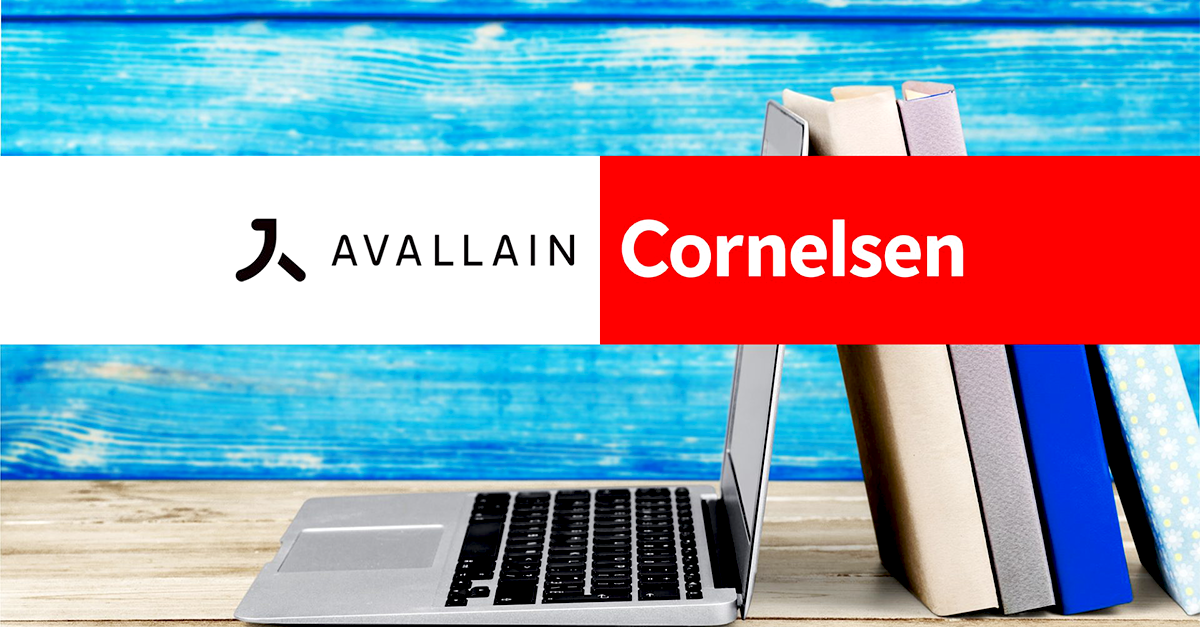Learning has never been more diverse. The digital revolution has forged new media, new content types, new ways to organise and monitor learning. It has given rise to new learning methodologies such as differentiated and personalised learning. It has freed us to learn and teach on a range of new devices, and thereby shift the boundaries of the classroom in new and exciting ways.
This diversity offers an unprecedented opportunity to meet the specific needs of learners and teachers. But it is also a very real challenge for those delivering education. Diversity breeds complexity, and that complexity can be hard to control. That is why we have spent the past two decades developing Avallain Unity.
Avallain Unity is true to its name. It creates diversity out of unity. It delivers powerful, flexible learning for all contexts, based not on a single technology, but on a union of the best technologies in digital education, working in a single, coherent ecosystem.
So where did it come from, and how does it work?
In 1997 we developed our first Learning Content Management System (LCMS), long before the term became widely recognized. This enabled our clients to create and manage large numbers of learning objects, and gather them into collections as lessons or courses. But this was a starting point and not an end. Publishers, institutions and teachers needed flexible tools to publish and manage multiple lessons and courses, in a user-friendly environment, and then track and support the activity of learners. To achieve this in a way that was meaningful, we needed to study learning paradigms, and the interplay between the stakeholders in education, and then provide effective tools to move them online.
Of course we were not alone in our ambitions. At around the same time, other providers emerged from higher education with technology based on ERP (Enterprise Resource Management). But ERP was conceived to collect, manage and interpret data, not as a basis for learning, and so often interfaces were dry and functional, structures rigid, and the user experience complex. The open source movement also produced powerful platforms, which made learning management technology more widely accessible, and quicker to evolve. But these are hard to customise without losing central support – one of the principal advantages of any third party system.
In each of these cases, educators often faced difficulties adapting the tools to their diverse needs. All too often, the learning was forced to adapt to the technology, rather than the other way around.
Learning management, done differently
We knew we had to do something new. Our years of work with many different learning providers had taught us several things about digital education:
- It’s all about the learning. Technology, however bold and innovative, is only useful if it supports learning experiences and outcomes. To achieve this education focus within technology, we would have to find a new skill set, which we called education design. As early as the 1990s, we became the first to develop a dedicated role for digital education designers.
- It’s not the same for everyone. Learning – and particularly digital learning – is a very different prospect for different types of learners, teachers and institutions. Our solution would need to be architected to support diversity.
- Things change, and quickly. Any technology of this ambition would go through a great deal of evolutionary change. Underlying technologies would come and go, and our architecture would need to be robust and flexible to allow that to happen.
Best-of-breed technologies, blended
With these as our founding principles, we set about developing Avallain Unity. We adopted a modular, object-oriented architecture, which would give us the flexibility to adapt to customer needs and technological change without difficulty. We separated presentation, features and content, so that we could innovate in one area without reinventing the others. Then we began drawing together best-of-breed technologies that we judged to offer learners, teachers, institutions and publishers the very best educational possibilities. In this way, we offer our clients early, low-risk access to technologies that have since become fundamental to the industry, such as:
- WCMS (Web Content Management Systems): tools that allow teachers, institutions and publishers to control how their platform is presented, without the need of programmers or additional marketing systems.
- Gamified accessways: interfaces that use the engaging, motivating features of gaming to facilitate and encourage learning.
- Cloud-native architecture: Avallain Unity was designed from the outset with a cloud computing architecture that simplifies delivery and enables mobile learning.
- Ruby on Rails: the elegant and solid framework for responsiveness and flexibility. As early adopters, we were able to lead while the majority of EdTech startups followed.
- xAPI: a specification for a common language to capture the actions and achievements of learners, wherever they are learning, on whatever device.
- LTI (Learning Tools Interoperability): a set of specifications that allow our technology to communicate or integrate with third party tools or educational platforms.
- eCommerce: the facility to manage financial transactions, including facilities for flexible pricing, upgrades and in-app purchasing.
All the while, we have kept that all-important focus on learning by ensuring that our education designers and our clients lead each new phase of development. This means we capture what works, while avoiding some of the technology fixations we see elsewhere in the industry. If it doesn’t work for students, teachers and institutions, it doesn’t make it into Avallain Unity.
But the innovation continues. One technology we are working with now, for instance, is a solution to manage and interpret the vast quantities of complex user data generated by our learning platforms and content. We are deploying business intelligence and data warehousing technologies like Amazon Elastic MapReduce and MetaBase BI to analyze this data more quickly, and to deliver ever more powerful insights. These insights will help students to learn and teachers to teach through personalized and differentiated learning, but they will also help Avallain and our clients, because they will inform the developments of the future.
Avallain Unity’s flexible approach to technology has enabled us to deliver more than 30 groundbreaking learning platforms to more than 15 million students, in radically different educational contexts all over the world. Some of the many learning programmes delivered by Avallain Unity are:
- Adult literacy programmes in Africa and Europe
- Language teaching with Pearson, Oxford University Press, Cambridge University Press, Cornelsen, Difusion and Macmillan
- Primary and secondary curriculum education in places as contrasting as Germany and Mexico, Kenya and the UK
- Integration education to support more than a million recent immigrants to Germany
But however many the applications of Avallain Unity, the platform remains true to its founding vision: a union of technologies that truly work for education, delivered flexibly to support a diverse and changing learning landscape.
Diversity through unity. After nearly twenty years, we know it is a vision that works, and we’re excited about where it will take us next.


